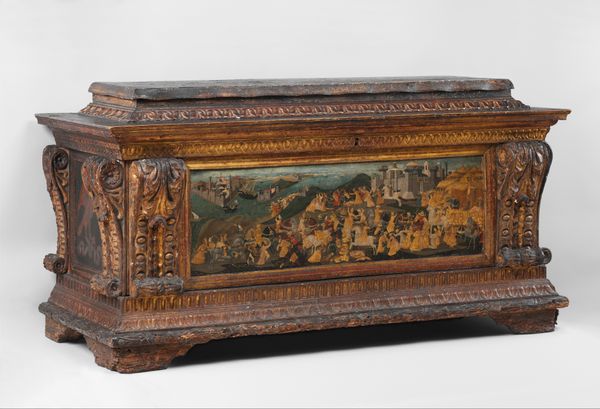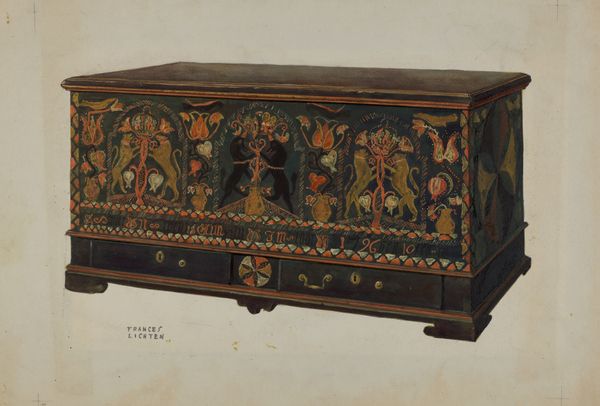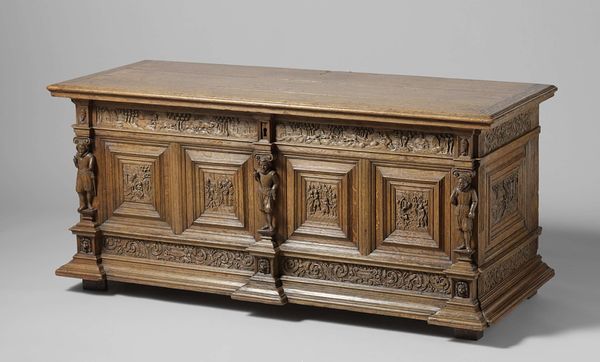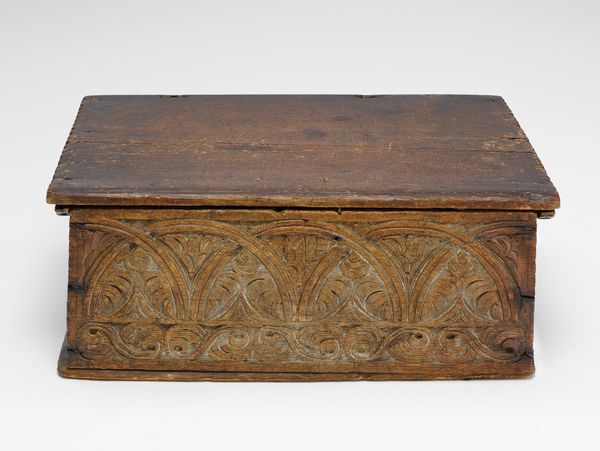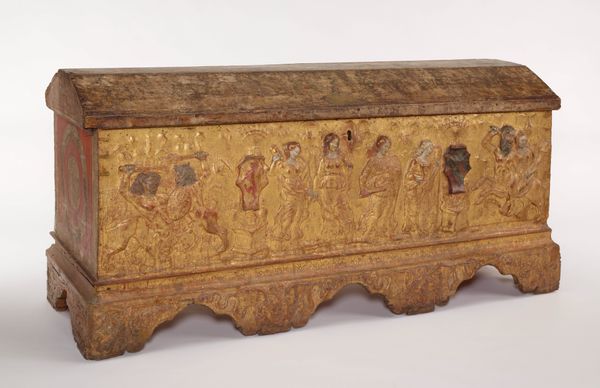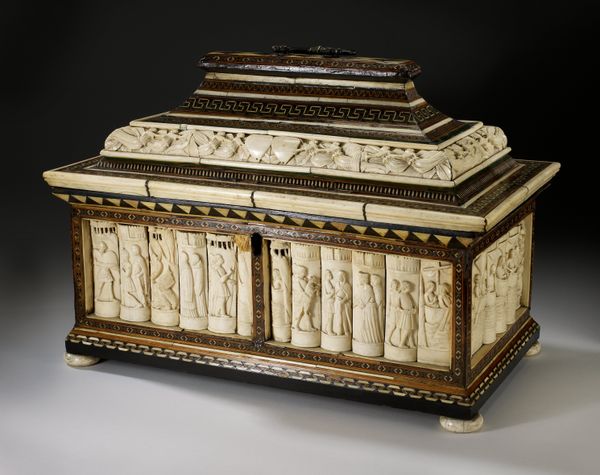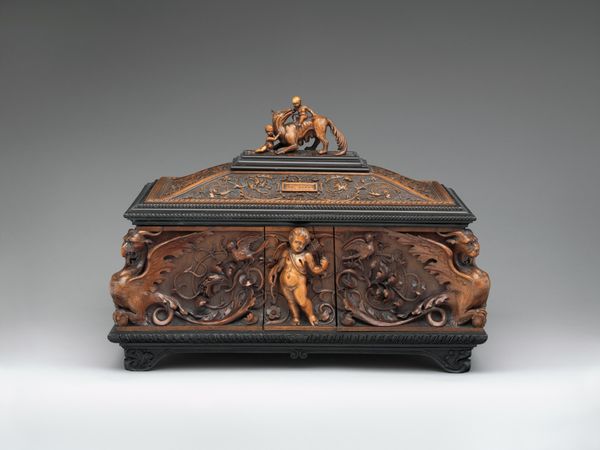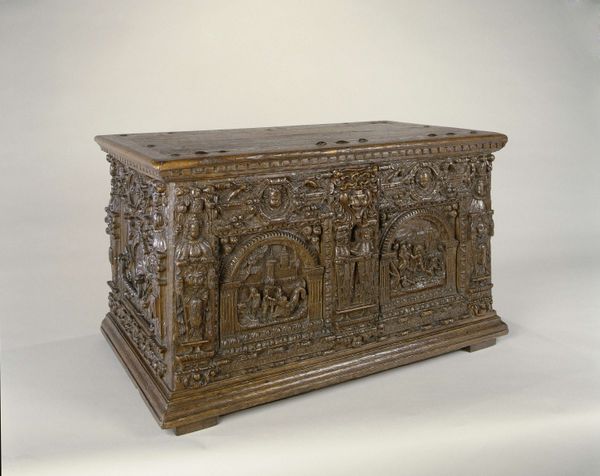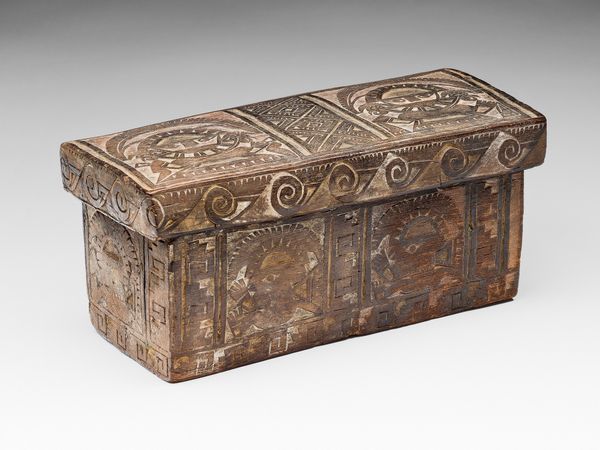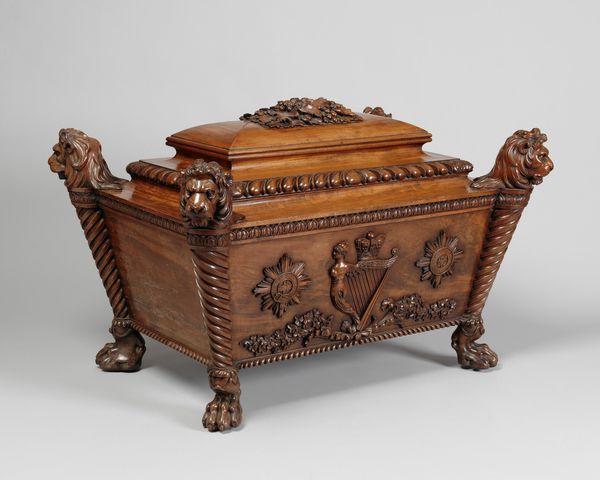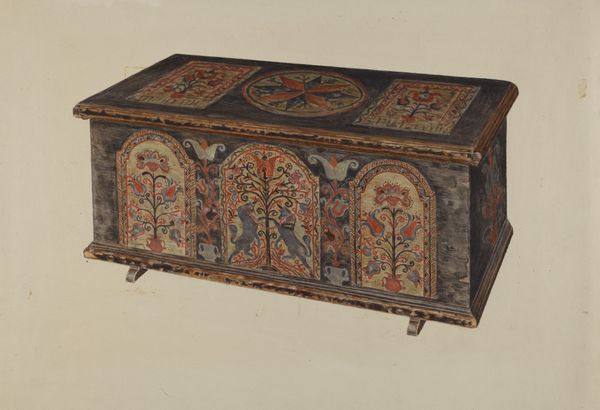
carving, relief, wood
#
carving
#
sculpture
#
relief
#
furniture
#
figuration
#
11_renaissance
#
wood
#
italian-renaissance
Dimensions: 25 1/2 x 69 x 22 1/2 in. (64.77 x 175.26 x 57.15 cm)
Copyright: Public Domain
Curator: Welcome. Before us stands a magnificent example of craftsmanship: an Italian Renaissance Cassone, or chest, dating back to approximately 1600. It is currently housed here at the Minneapolis Institute of Art. Editor: It's commanding. The weight of the wood itself... it exudes wealth and power. The detail is astounding, especially considering this was likely functional furniture. Curator: Indeed. Cassoni like these were significant cultural objects. They were traditionally commissioned for weddings, forming part of the bride's dowry. Often adorned with imagery referencing classical tales, mythological narratives, or even family heraldry, they conveyed social standing and aspirations. Editor: Looking at the construction, I wonder about the division of labor in creating such a piece. Was it a master craftsman who oversaw the whole project, or a workshop where different artisans specialized in carving figures, decorative elements, or perhaps even the structural elements? Curator: Very insightful. Undoubtedly, it was collaborative. The designs likely originated with an artist familiar with humanist ideals and popular allegories, while skilled woodworkers brought the designs to fruition. Patrons would have played a key role in dictating subject matter depending on the marriage's symbolic importance. Editor: The medium itself speaks volumes. The choice of wood, its availability, the tools employed...all shaped the final product. Imagine the sheer hours of labor invested in meticulously carving these reliefs and figures. We see that it becomes something more than mere storage, representing status earned, lineage, or newly formed connections between wealthy families. Curator: Exactly. These chests became powerful visual symbols in patrician households. Displayed prominently, they served not only as practical storage but also as a constant reminder of alliances forged and status achieved within the highly competitive social landscape of Renaissance Italy. Editor: Thinking about the making process shifts the perception. It's easy to be wowed by the aesthetic appeal, but it's crucial to acknowledge the social dynamics inherent in its production and the physical effort it required. What do we learn from an object like this about social class at the time? Curator: The chest becomes a material record of not just wealth, but cultural and political ambition during the period. Editor: Thank you. Examining this Cassone underscores the interwoven aspects of skill, material, and societal dynamics that existed during its creation. Curator: It does, providing valuable insight into the priorities and public identity of Renaissance society.
Comments
No comments
Be the first to comment and join the conversation on the ultimate creative platform.
